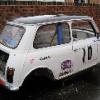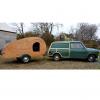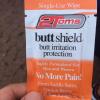Ok, I have seen the topic on quality of bolts and get the point, but my question is this. On a top end fast road/track day engine how often should you replace the head studs, bottom end bolts and the con rod bolts? I have heard some people say every time you strip it down and if money is no problem then I would but this can get very expensive as you are looking at about £400 for the bolts and head gasket. I know you are going to say that this is a lot less than a total engine, if something lets go & you lose all of your engine! What is the point of paying the all that money every time?

#1

Posted 25 May 2014 - 07:33 AM
#2

Posted 25 May 2014 - 08:30 AM
IMO, don't fix what ain't broke...
#3

Posted 25 May 2014 - 09:02 AM
#4

Posted 25 May 2014 - 09:04 AM
I'd always replace big ends, they have a stressful life and the consequences of failure are always bad. The rest can be engineered with a greater safety margin as they don't move, so no mass/inertia issue.
#5

Posted 25 May 2014 - 11:21 AM
If you are needing to strip every event or other event then maybe you need to replace more often
#6

Posted 26 May 2014 - 04:23 AM
IMO, don't fix what ain't broke...
If only life were so simple.....unfortunately it ain't.
Something called Young's Modulus says that things like studs etc have elastic limits and once you reach them then plastic deformation can occur.
I'm sure you don't need me to tell you that the key to getting a good fixing is to be able to torque a fastener up to just below it's elastic limit and rely on the elasticity of the stud to hold things in place (indeed big studs are stretch hydraulically then then nut ran up just snug so that nut friction doesn't mess things up).
And interesting test was carried out a few years back by Britool, seeing if mechanics with skill could tightened up head bolts by feel (a firm pull on a spanner of normal length used to be the benchmark) - the results were that most who had proper training and experience could.
Anyway back to the plot - high stress items like big end bolts can crack due to continually cycling up to the elastic limit.
Choice is yours whether to change them or not, but maybe in an engine expect to run at sustained high speeds then it may be work considering.
#7

Posted 26 May 2014 - 09:12 AM
Yes and no. ARP bolts are in most cases used for pub points to be honest, for the vast majority of our cars regular standard fixings will be quite adequate. Having ARP fixings or other high quality stuff is like a form of insurance. They do stretch, they have to stretch. Stretching the steel of the fastener is what holds the parts together tightly. The big end for example has to be stretched until the force of the stretch in the bolts pulling the cap closed is slightly higher than the force trying to pull it open when the piston gets to top dead centre at maximum engine speed (somewhere around 10 tons in most engines, it depends on the piston and rod weight, stroke and speed). If the force in the bolts is lower, or significantly higher than that the bolts will fail eventually. You use quality fasteners because of a few things. They are very tightly quality controlled, and they employ very detailed and often patented design details to make the fastener perform well. That is in terms of the specifics of the machined shape of the fixing. Obviously fastener design has come a long way since the A series was first developed and this can be seen simply by comparing A series engines with A+ units but ARP go even further and do lots of development. Standard fasteners are designed to do the job, but also to be cheap and quick to produce and allow the engine to be assembled very quickly on the line. This often results in them having things like a few additional unused threads, which introduces a weakness, and sharp edges, seams and cutting / rolling lines that all leave stress rises. But if you start changing the design of the engine or what it's going to be doing you might need to upgrade. For example going back to the rod bolt if you lighten, balance and stress relieve the rods, change the pistons or want the engine to have a higher red line you will change the load on the rod bolts. This might mean needing a different bolt or tightening it to a different load. So ARP items are needed when they are needed, but if the engine is broadly standard they aren't really.I may be wrong as I only know what I have read on here and not through experience but isn't the point of the extra expense of arp bolts that they don't stretch and don't let go? Meaning they can be re-torqued a few times? I have them in my engine based on what I have read on here but I won't be changing them at the first strip down and possibly not the next (unless someone give good reason otherwise) but mine is a 100bhp road car, not an out and out racer
How hard an engine is driven will affect the wear of parts and so on but doesn't have that much impact on the load seen by fasteners if they are properly installed.
Going back to the topic, and considering when to replace parts, manuals and standard procedures talk about replacing fasteners often but this ultimately comes down to what I said above about how standard fasteners are designed and made. Research has shown that due to the quality of the surface finish, standard fasteners lubricated with engine oil (as most engines are assembled) will take around 8 to 10 torque cycles to reach their maximum stretch at a given torque. That is to say that as you tighten them the thread surface is becoming polished, so it generates less friction the next time. So for the first 10 times you install it, every time you take it to the same torque it will actually be clamping up tighter. The impact this has is that because as I said the fasteners are designed for rapid assembly of the engine, on the line nobody is going to be cycling bolts 10 times. The bolt is designed so that the clamping load it imposes the first time it's torqued is the right load. But if you then strip and rebuild the engine and take the original fixings to the same torque it will be clamping tighter. Too tight is almost as bad as too loose for engine life. So standard fixings should be replaced every few uses, or they will fail in use and probably because they are too tight rather than worn out. Manufacturer manuals often state replacement schedules for majorly stressed fasteners. This doesn't apply so much to studs and nuts as used in our cylinder heads because the two parts can be made to compliment each other's characteristics quite closely, but for engines with the head held by bolts threaded directly into the block you can't make the block match the bolts. So for those types of engine it's in many cases essential to change the bolts every time you have the head off. The same probably applies to rod bolts with separate nuts as opposed to those threaded into the rod.
ARP fixings however are made with a much more tightly controlled surface finish. That's partly why they cost more. They also come with very high quality lube for installing them. Due to this there is no polishing of the threads, the torque cycling is very consistent every time. So in theory you can use them far more times than standard ones, but ultimately as said above they will start cracking up from the stretching eventually. They don't state a replacement schedule but they do have graphs showing performance up to 10 or 12 torque cycles. Personally I wouldn't go to many more than that.
Sorry that's a bit of an essay!
Edited by Dan, 26 May 2014 - 09:20 AM.
Also tagged with one or more of these keywords: engine
Mini Technical Sections →
Problems, Questions and Technical →
‘93 Spi Downpipe ReplacementStarted by ShabbyMini , 03 Apr 2025 |
|
|
||
Mini Technical Sections →
Problems, Questions and Technical →
93 Italian Job Wont StartStarted by Mattnumber2 , 28 Mar 2025 |
|

|
||
Mini Technical Sections →
Problems, Questions and Technical →
NewbieStarted by adenton , 23 Mar 2025 |
|

|
||
Mini Technical Sections →
Problems, Questions and Technical →
Tips On Buy An Used Su Hs4 CarbStarted by hfolguera , 17 Mar 2025 |
|

|
||
Mini Technical Sections →
Problems, Questions and Technical →
Engine Has Been Sat 10 YearsStarted by JHN_mini , 15 Mar 2025 |
|
|
1 user(s) are reading this topic
0 members, 1 guests, 0 anonymous users
















